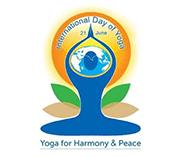Why do we cry?
Tears are a clear liquid that fills your eyes when you experience significant pain, overwhelming emotion or the invasion of an irritant, but not all tears roll down your cheeks in uncontrollable streams. If you’ve ever touched your own eyeball, you’ll know that it’s always wet. This is because tears are produced by your eyes constantly. Usually, the volume of tears produced is low enough that they don’t overflow out of your eyes. Instead they’re drained by tiny holes in the upper and lower eyelids called tear ducts. Tears contain the salts potassium chloride and sodium chloride, enzymes, lipids and essential minerals such as calcium and magnesium. Lysozyme is one of the most abundant enzymes in tears, as the first line of defence against bacteria. This protein works to kill any bacteria that enters the eye, which can easily happen when you rub your eyes with your hands. But not all of the benefits of crying are physical. Psychologically, we feel differently about others when we see them cry. It can show a person’s vulnerability, and studies show that during emotional arguments, people often become less aggressive towards others when witnessing them crying. By releasing tears you’re also more likely to receive help from others, bond with them and be trusted.
Less than one per cent of your tears is salt.
Why do we cry with happiness?
Crying is a release of emotion, but this emotion doesn’t always have to be sadness. Have you ever been reunited with a close friend and burst into tears as soon as they arrived? Or perhaps when it was the happiest moment of your life? Although you know when you are happy and sad, the brain can become overwhelmed by influxes of such strong emotions. Both positive and negative emotions are dealt with in similar ways by releasing tears. The amygdala is the part of the brain that processes emotional and behavioural responses. Just before you cry with happiness, the amygdala sends a signal to the glands in the eyes to make them produce more tears. When these tears are released from the eyes, the hormone oxytocin is also released in the body, working to calm the body by instigating physical changes such as reducing blood pressure. In the same way that sad crying relieves the negative emotions felt, happy crying stops the brain being overwhelmed with opposing changes in your mental state. Happy tears are sweeter tasting because they’re less acidic.
Tears are made up of over 1,500 different proteins.
Types of tears:
The act of crying can have negative connotations, but not all crying is the same. Some tears are produced during highly stressful and emotional events, while others are formed after a single cut into an onion. There are three types of tears, differentiated by their triggers and impact on the body: basal, emotional and reflex tears. Each type also varies in its composition. Basal tears are always present on your eyeballs. They are made up of three layers, serving as a protective coating for delivering nutrients to the eyes. Without these tears, your eyeballs would dry out.
While basal tears work to keep small amounts of physical debris out of the eyes, emotional tears relieve stress and help to stabilise mental health. Stress chemicals have been detected in emotional tears, meaning that the act of crying can literally flush overwhelming feelings away. The third type is reflex tears. These are mostly made of water, which is released in higher volumes when an irritant such as a small insect – or the enzymes and acid released by onions when they’re cut – makes contact with the eyeball. More antibodies, which are defence proteins of the immune system, are released in these tears to fight any harmful cells that might enter the eye.
Onions release sulphur when cut, which forms the irritant sulphuric acid when it makes contact with the water on your eyes, causing more tears to be produced.
How basal tears create a protective layer (TEARY-EYED ANATOMY)
1 LACRIMAL GLAND: One of these glands is located above each eye. Here the bulk of tears are continuously released onto the outside of the eyeball.
2 MEIBOMIAN GLAND: Around 30 of these glands line the lower eyelid. These and the 40 on the upper eyelid release oil into tears.
3 CONJUNCTIVAL GOBLET CELLS: These cells produce a protein called mucin, which lubricates the eye and prevents the eyelids from sticking to the surface of the eyeball.
4 MUCOUS LAYER: This inner layer contains a protein called mucin, which is sticky and keeps the tear film attached to the eyeball.
5 AQUEOUS LAYER: The biggest portion of the tear film is water. This layer is 98.2 per cent water and 1.8 per cent solids to hydrate and nourish the eye.
6 LIPID LAYER: When excreted from the meibomian glands, the oily layer prevents the water in the tears from evaporating and makes the eyeball’s surface smooth.
7 EYELASHES: The small hairs that stick out from your eyelids reduce the movement of air around the eyes so that tears don’t evaporate quickly.
8 EVEN SPREAD: Each time you blink, the three-layered tear film is spread evenly across the eyeball’s surface by the eyelids.
9 TEAR DUCTS: These passages carry tears from the eye into the nose. Here the old tear film can exit the body by evaporation or re-enter the body.















































